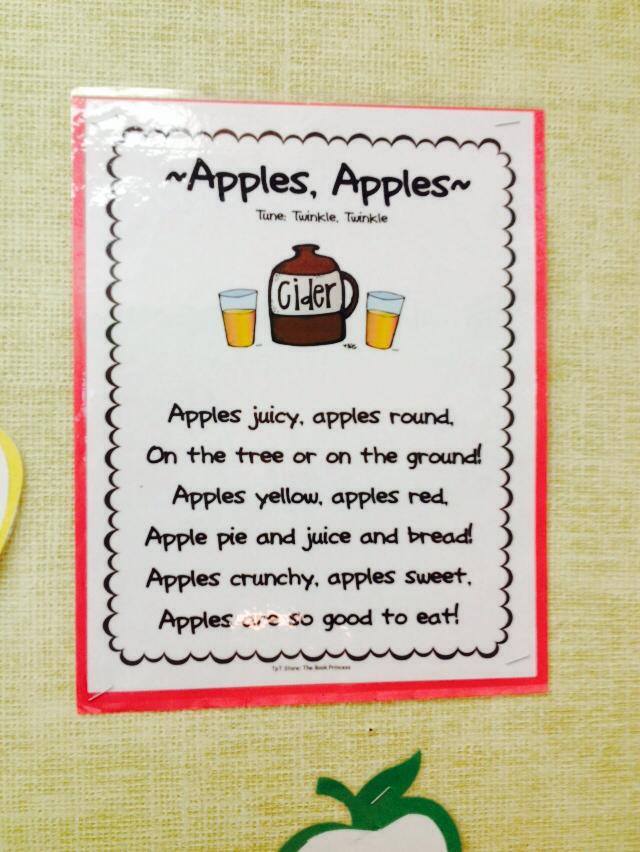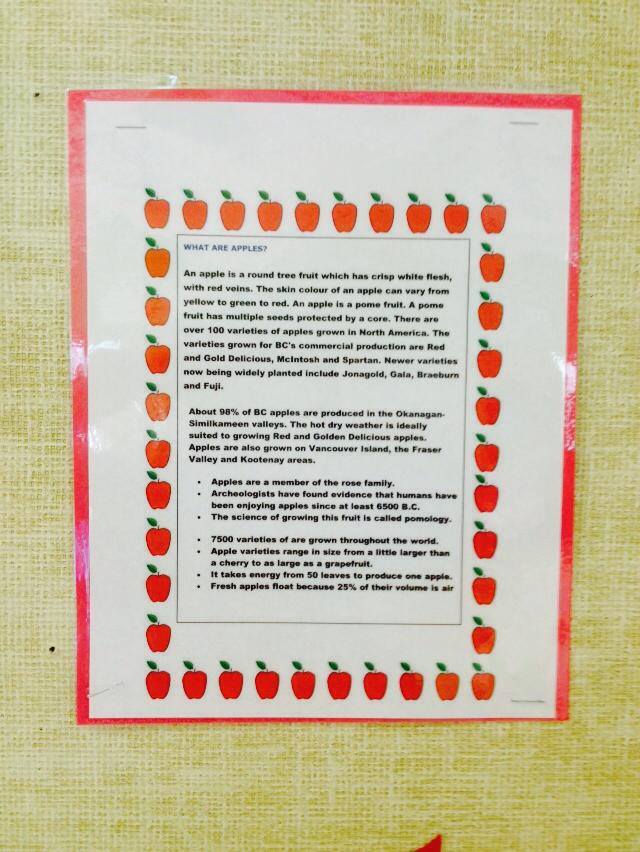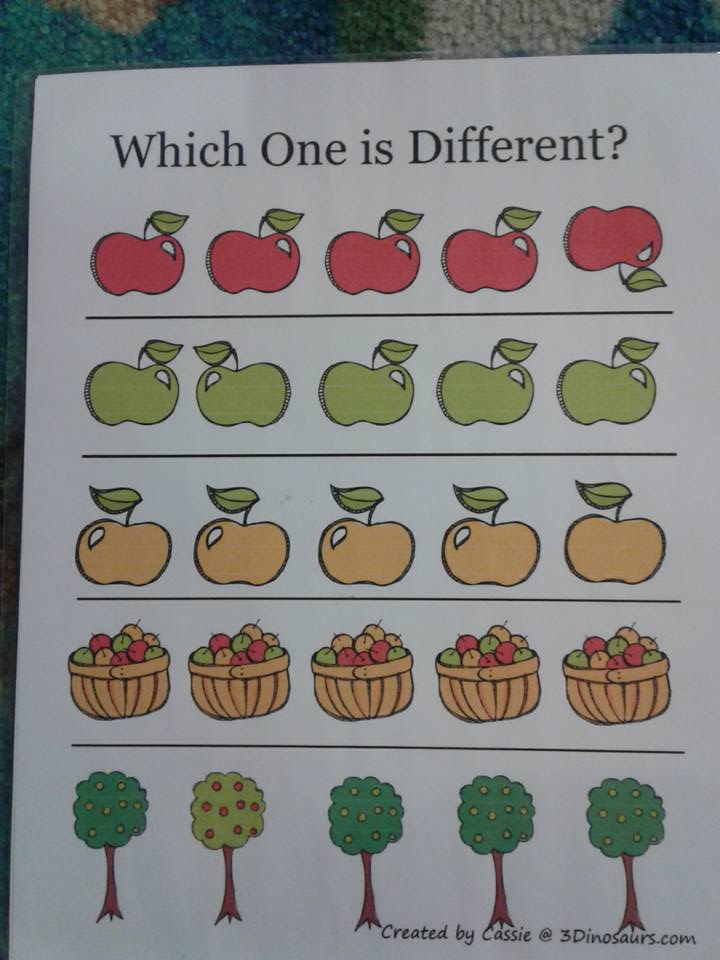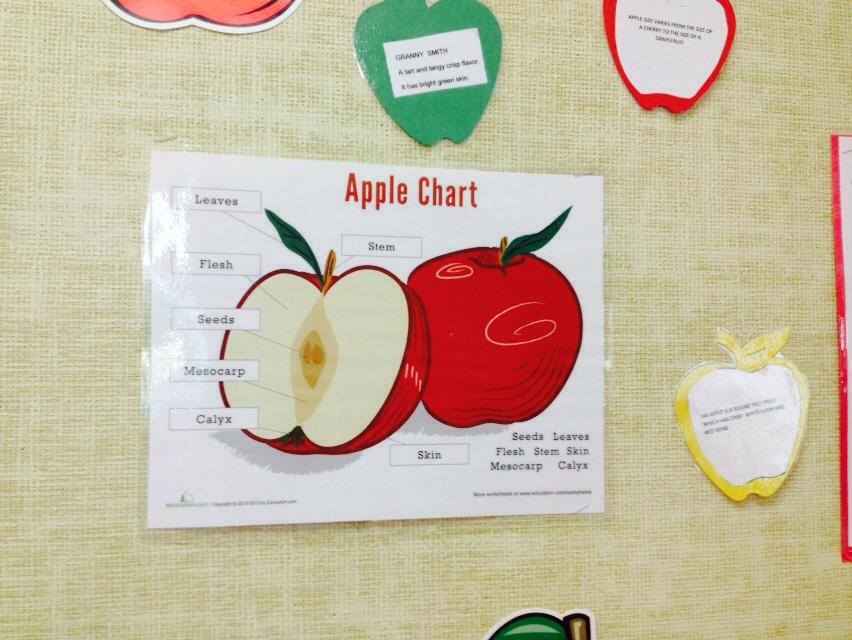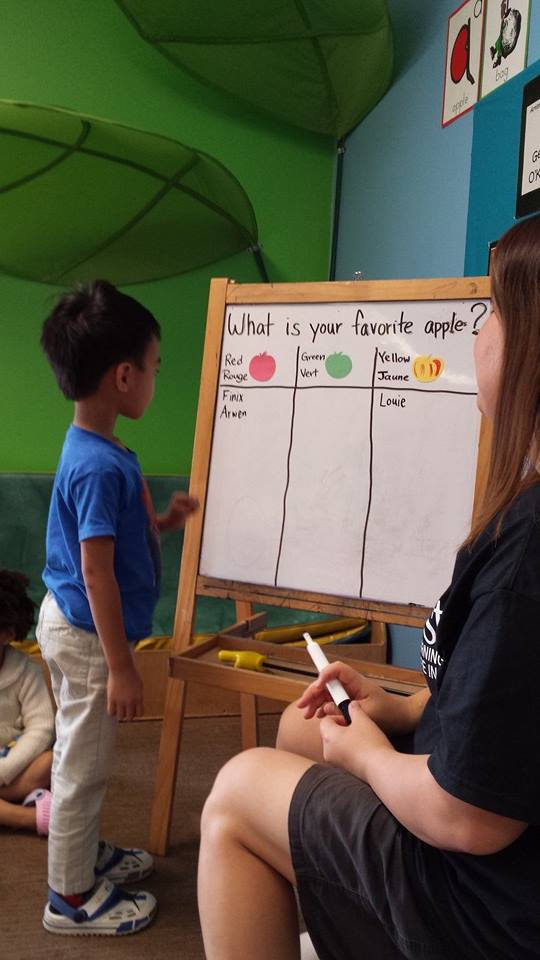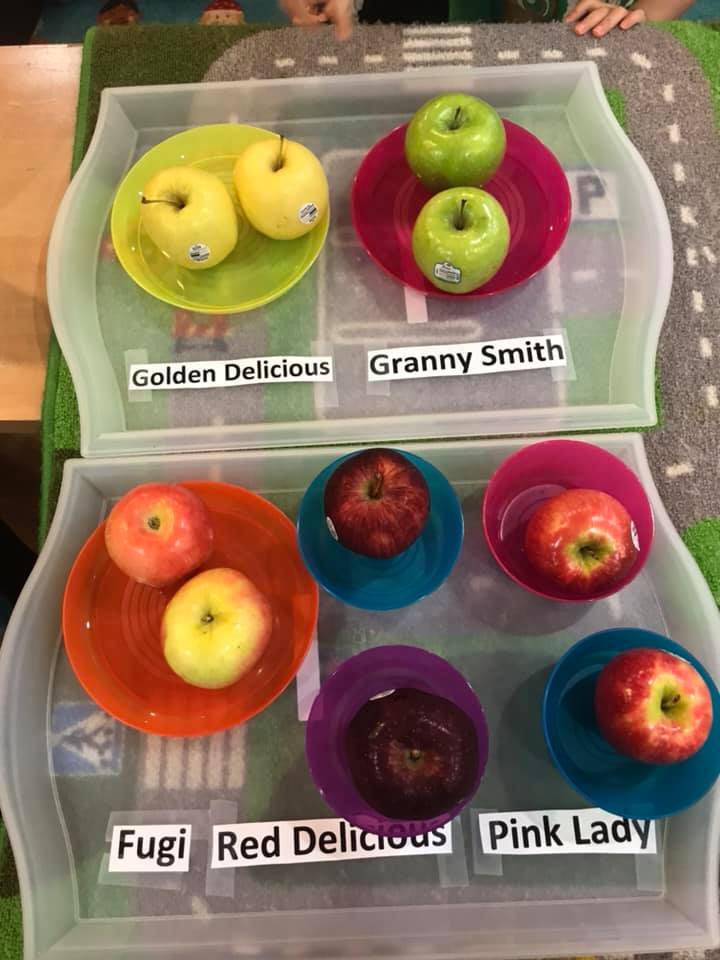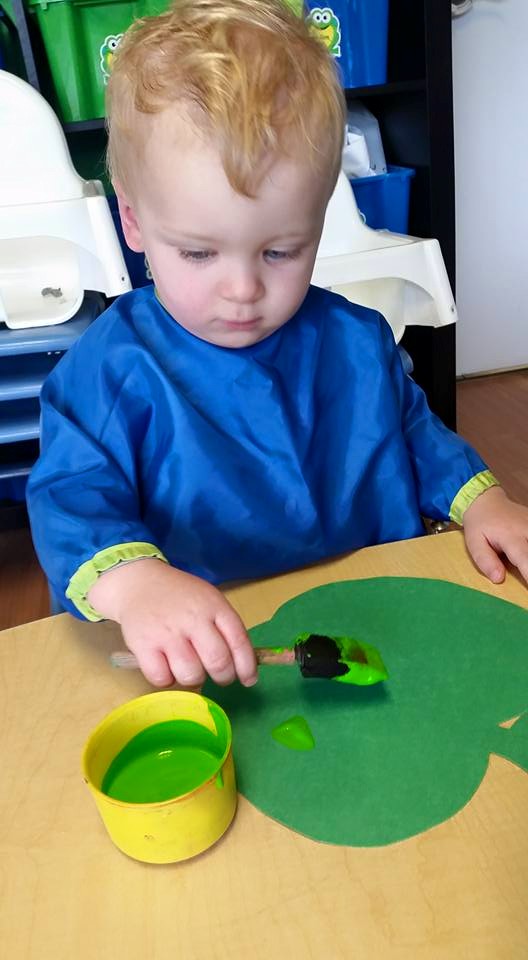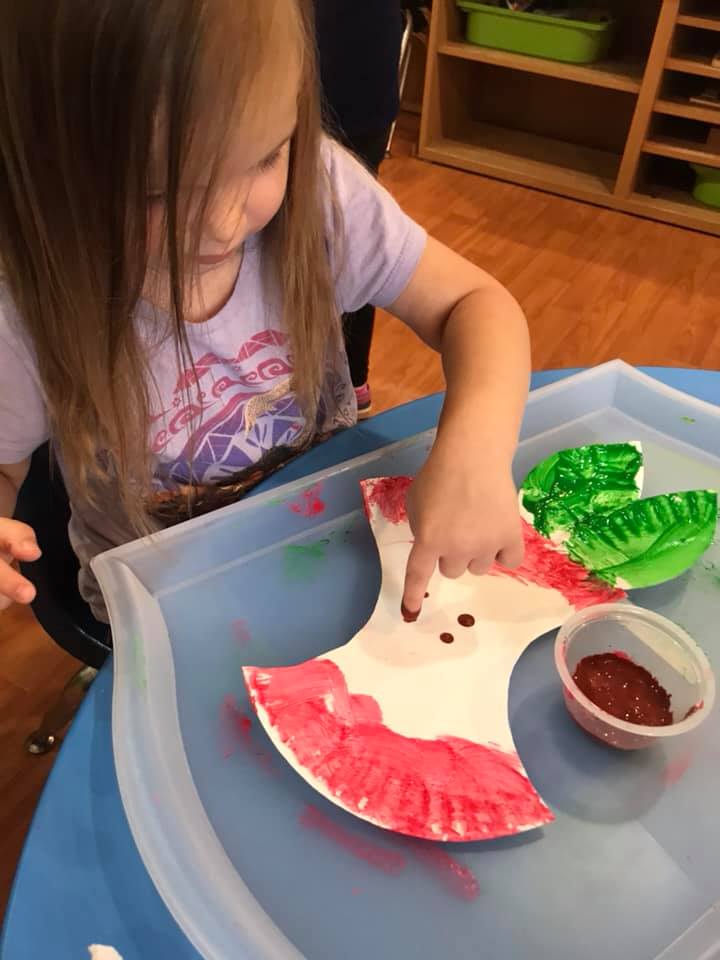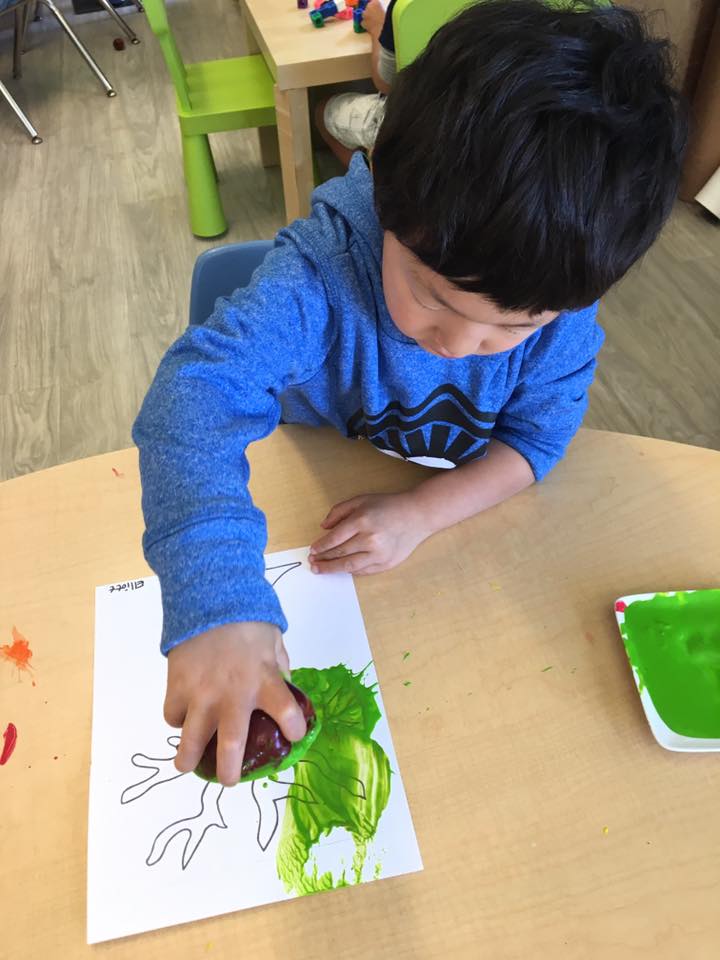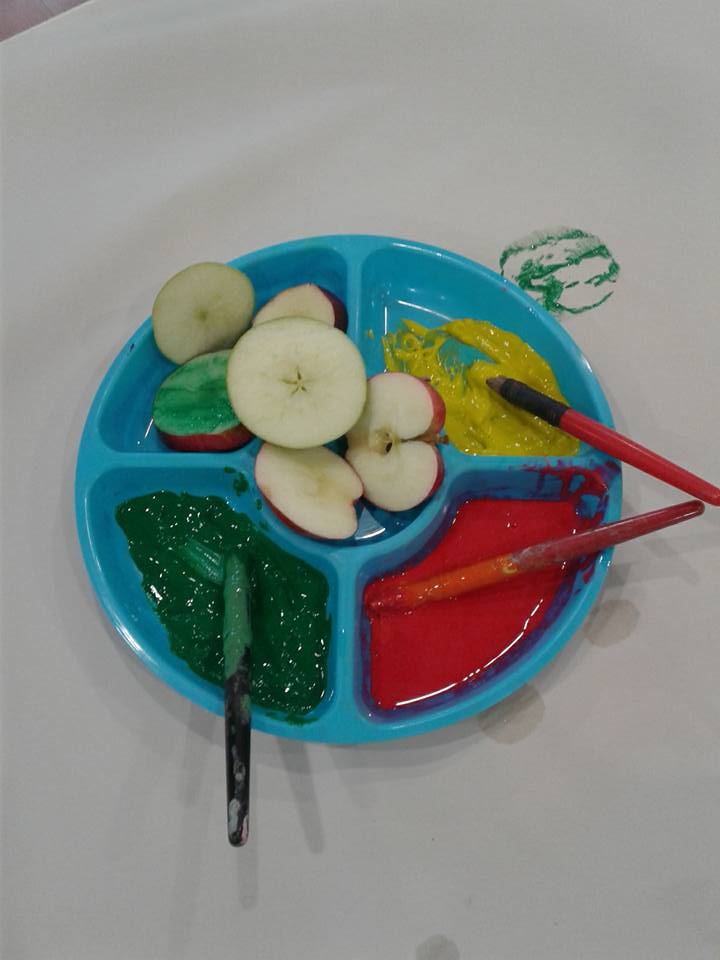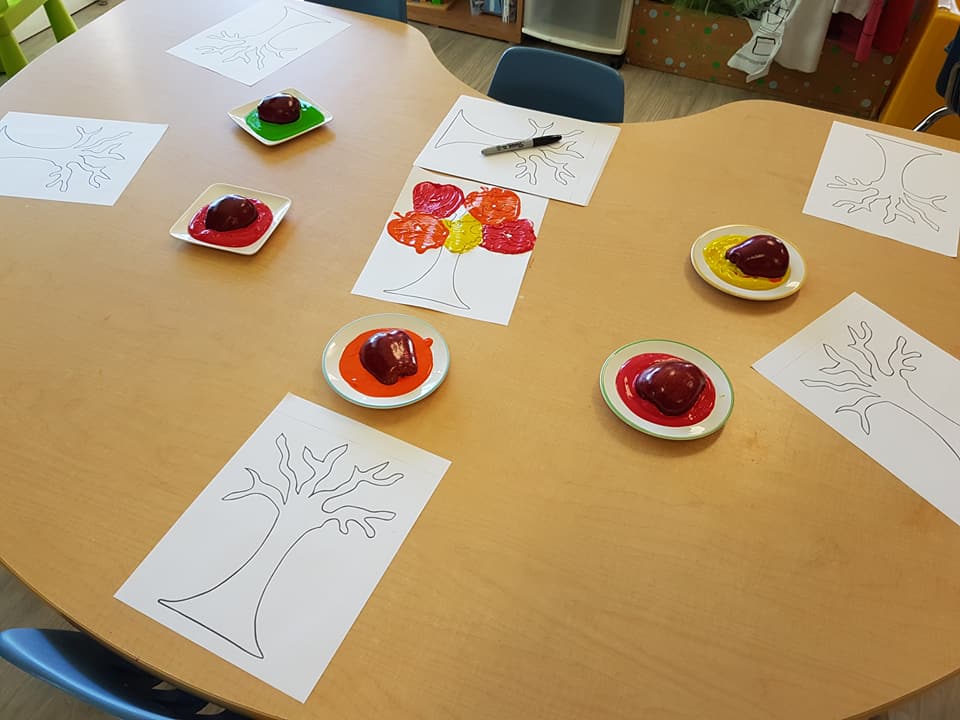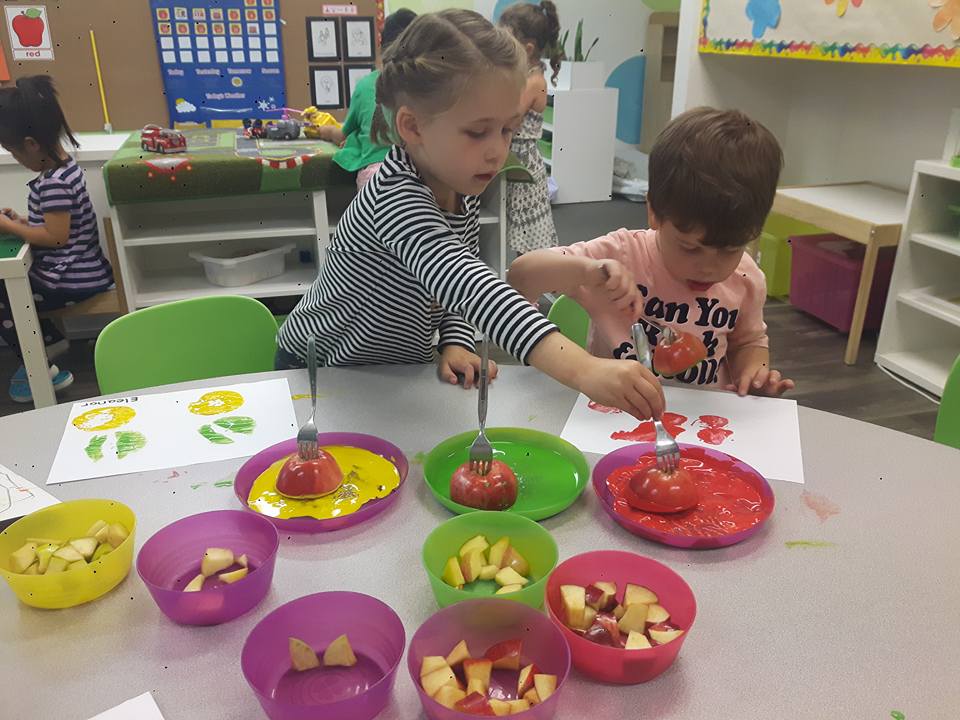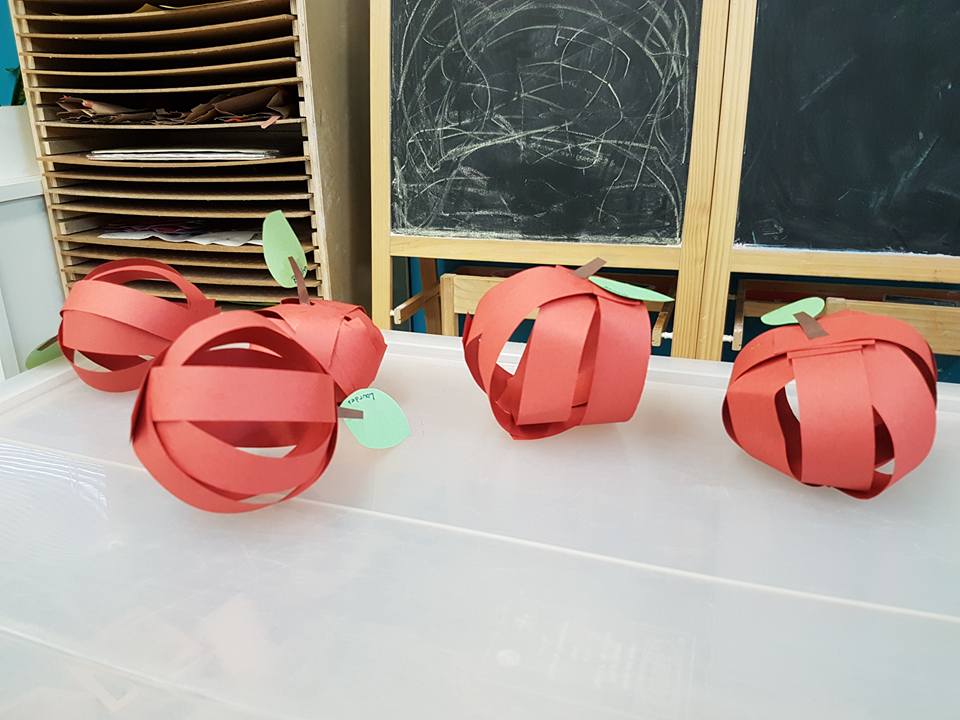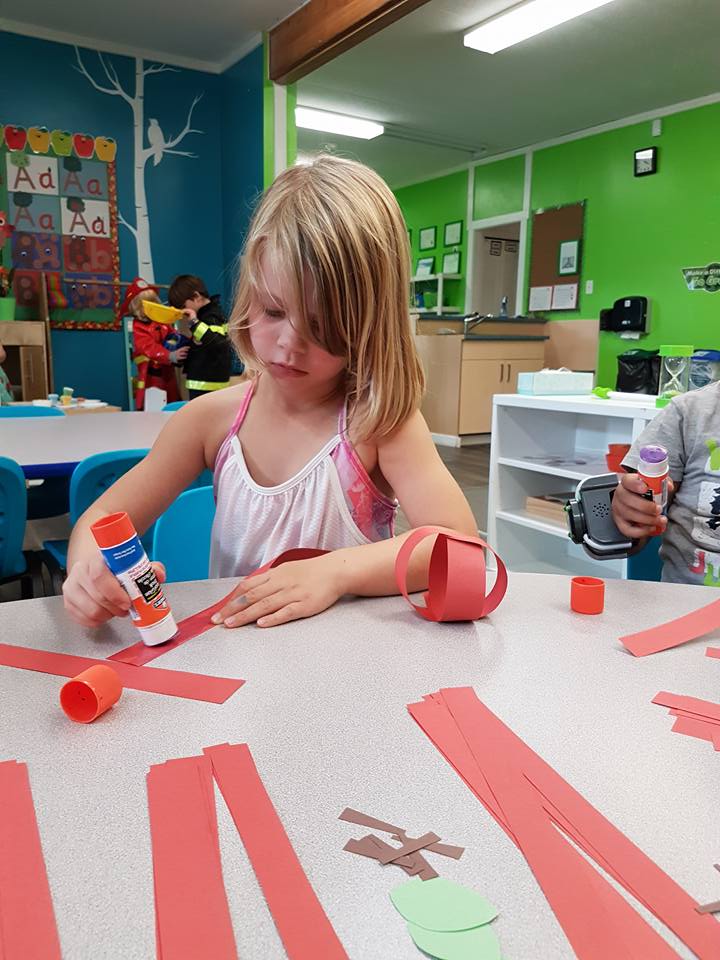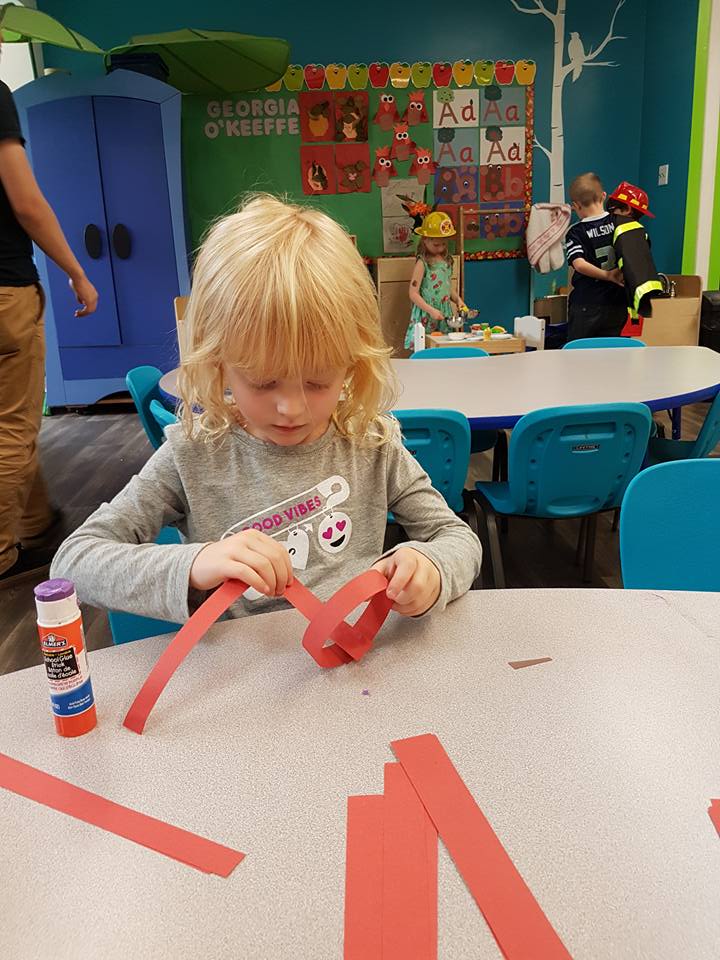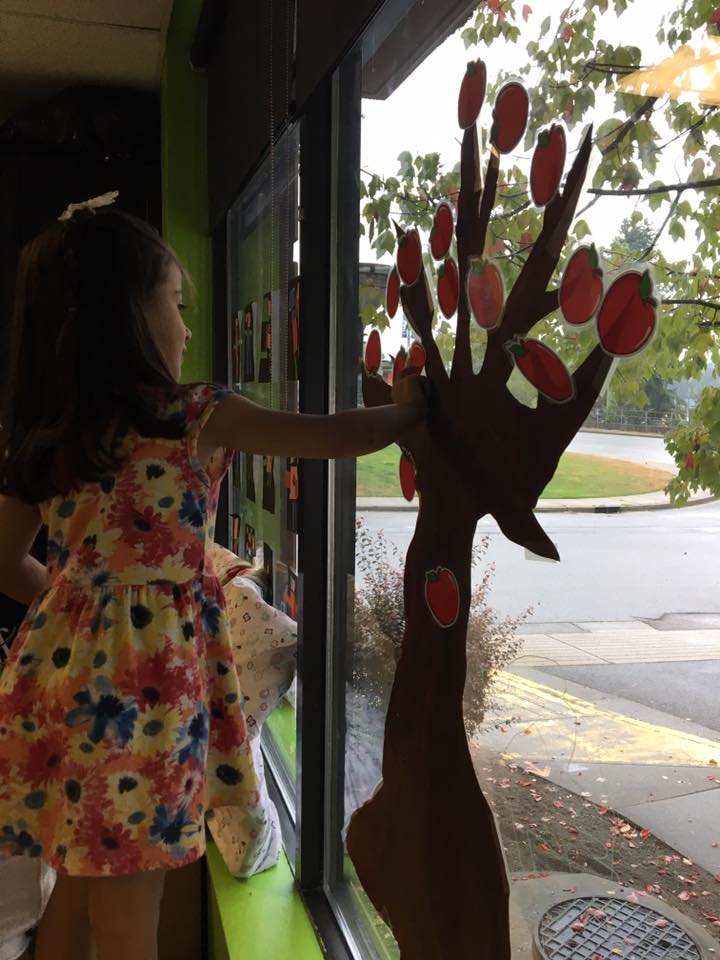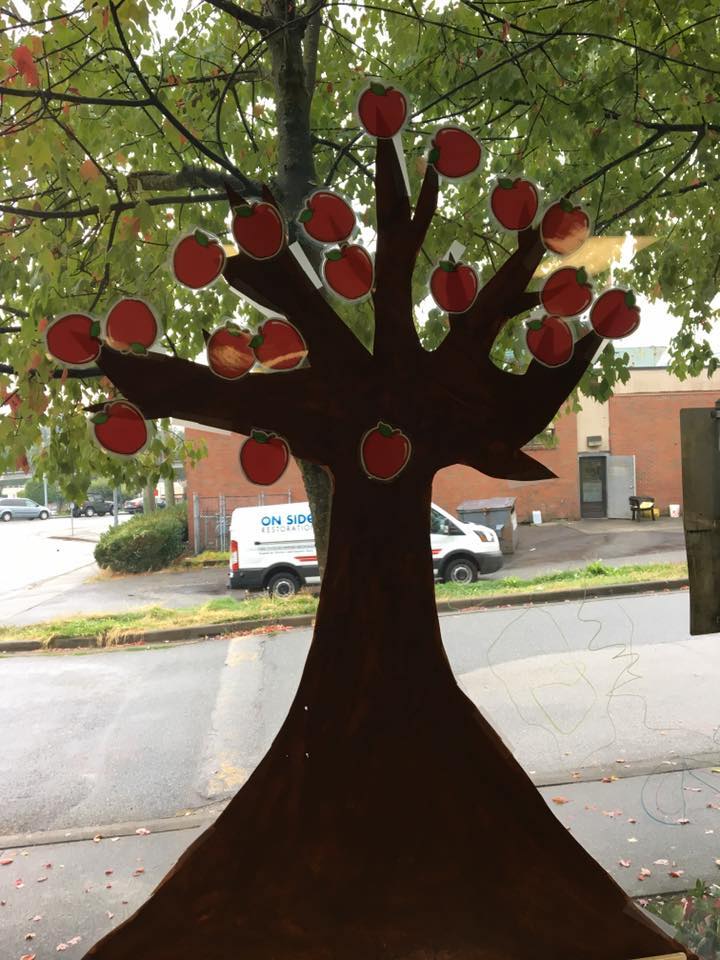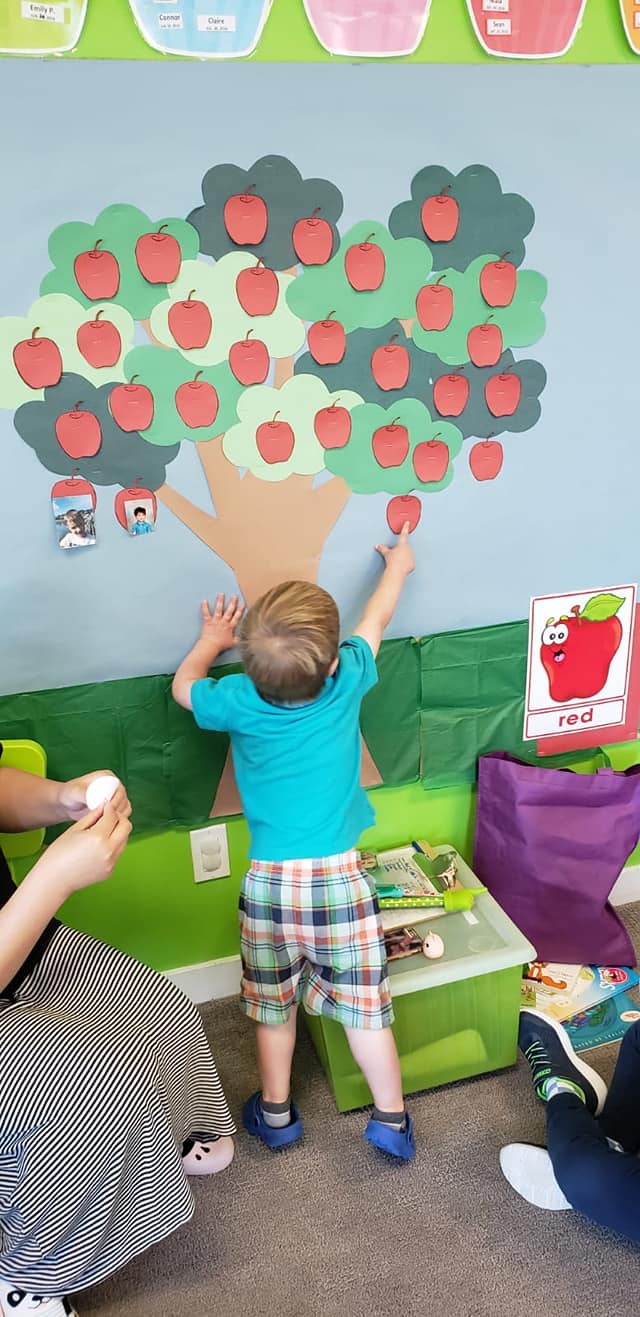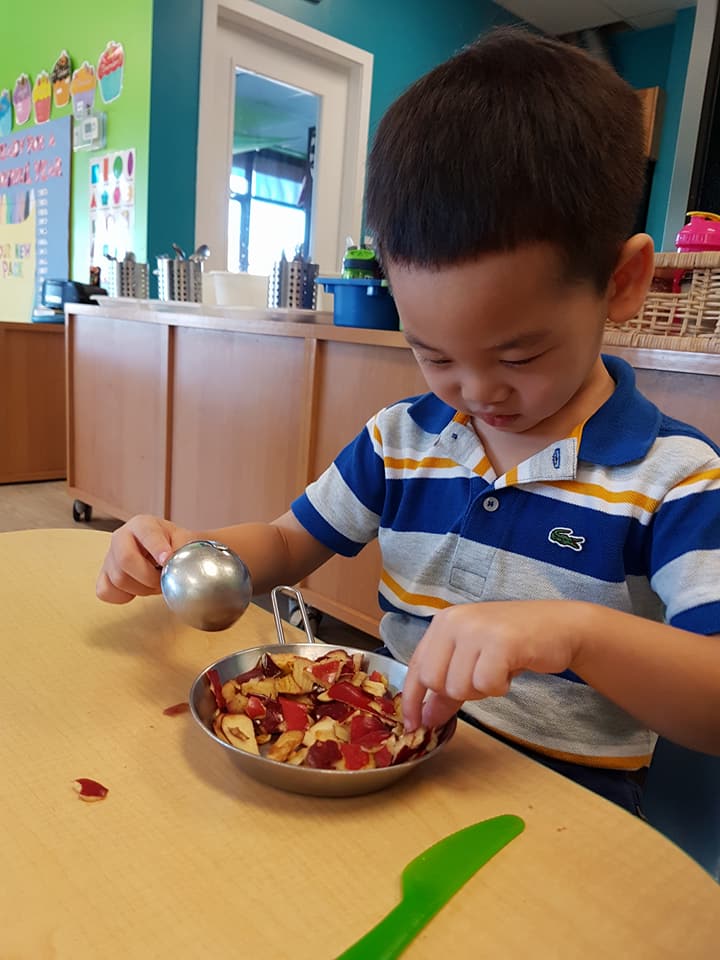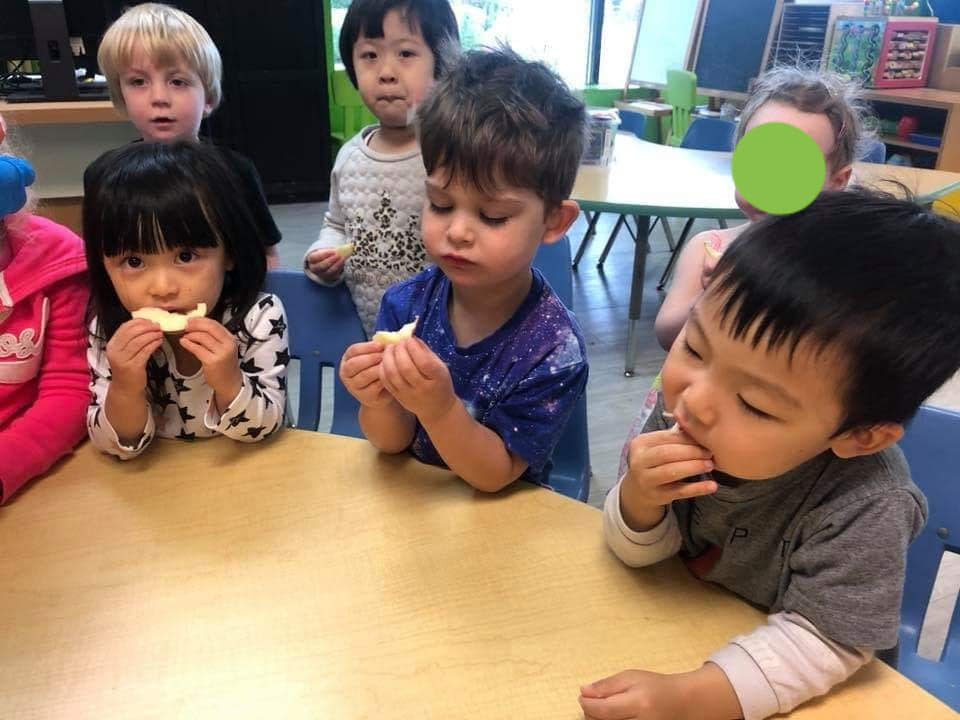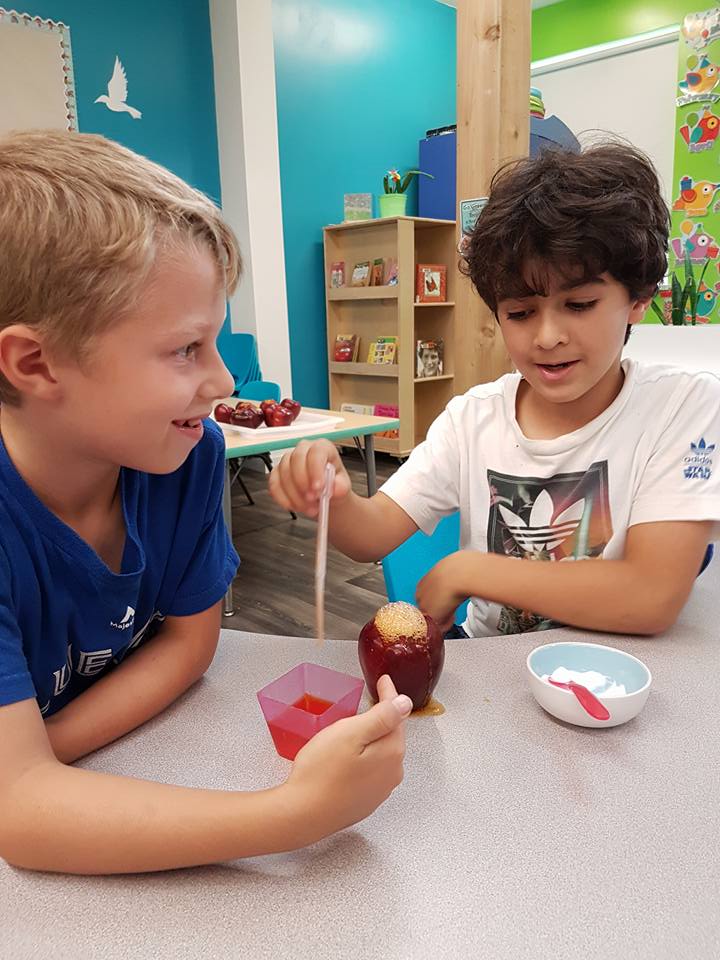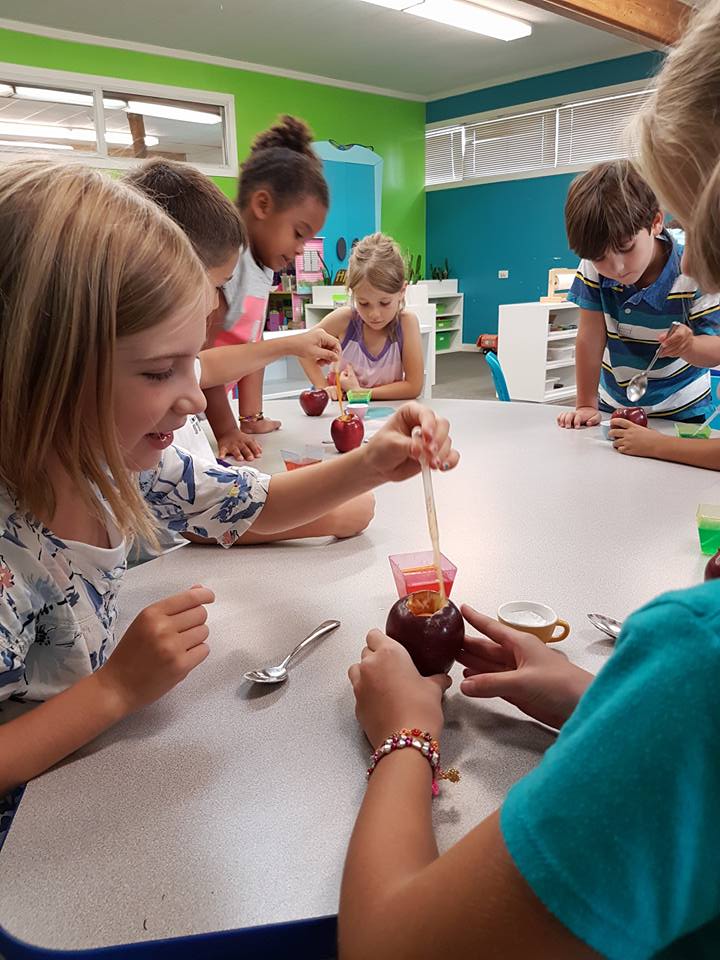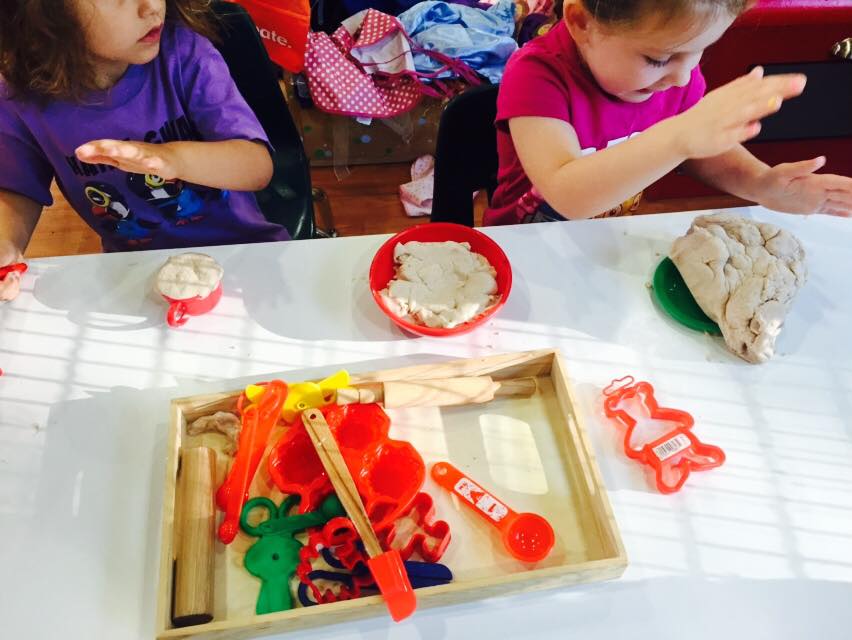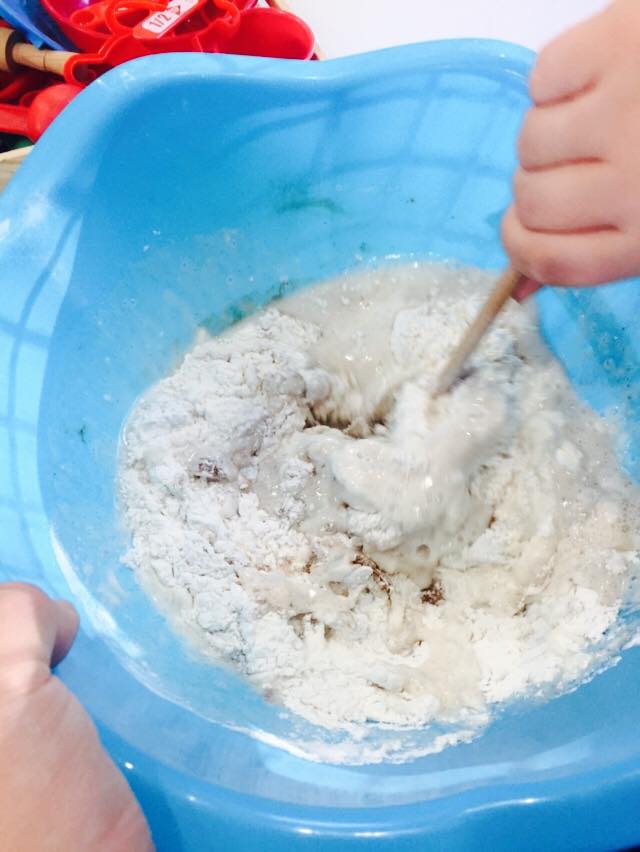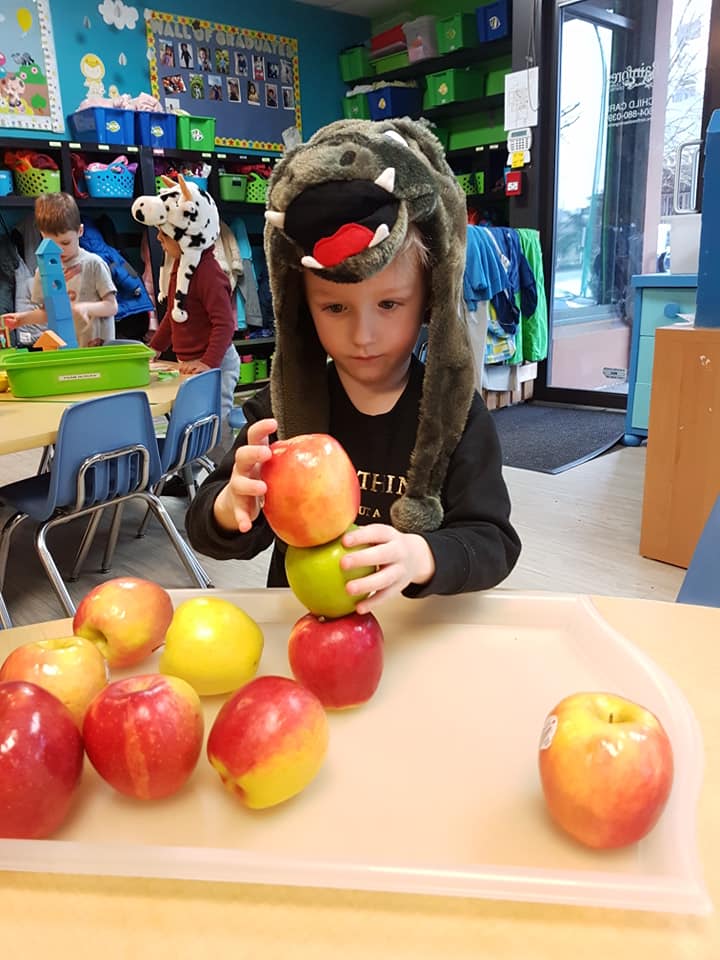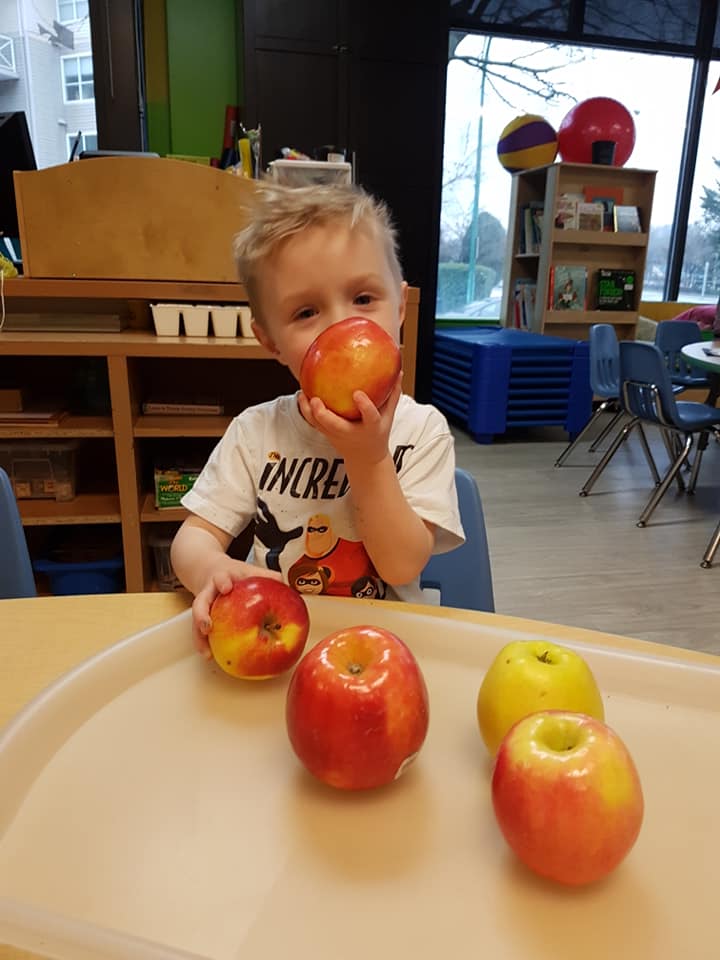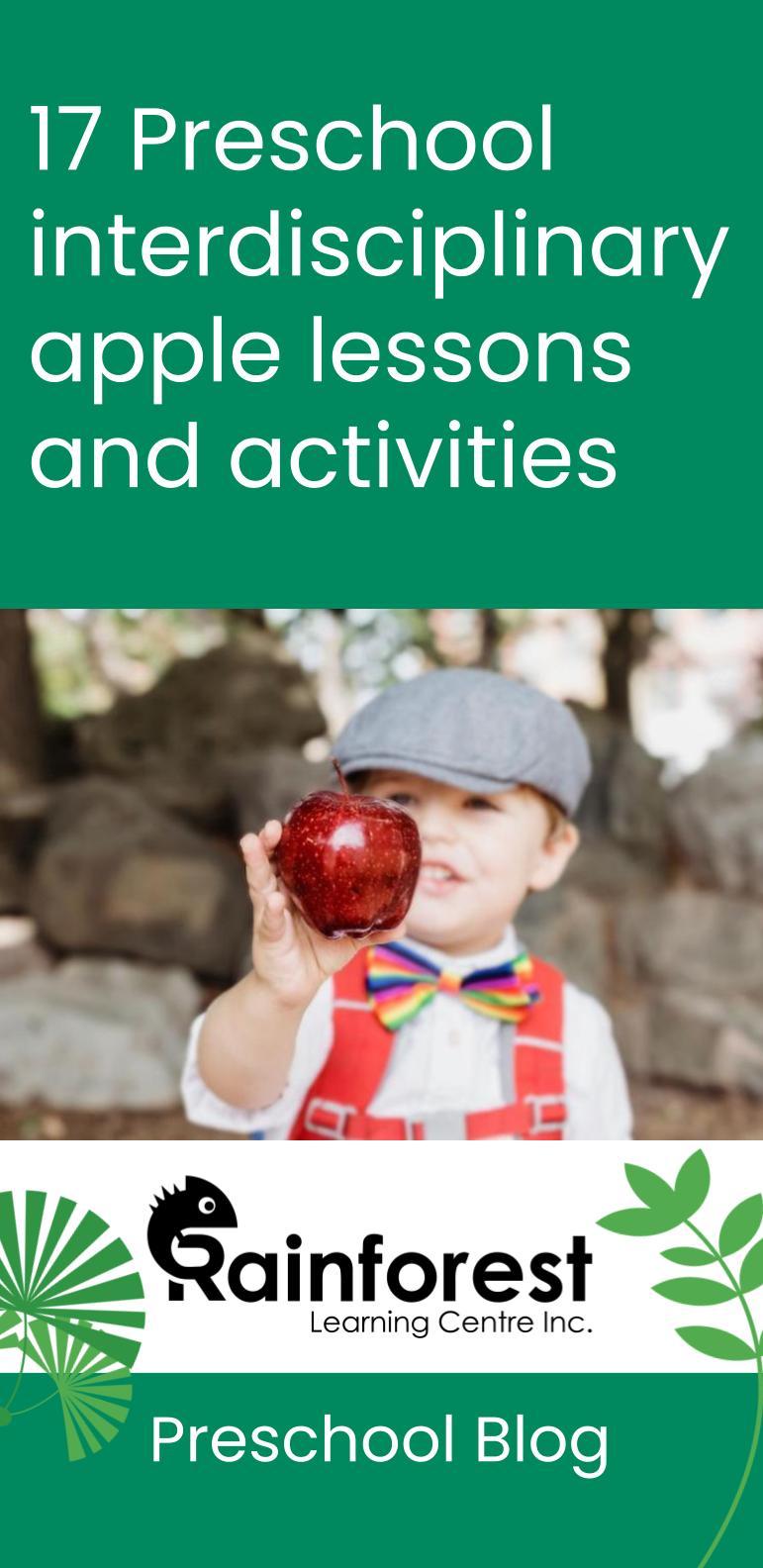
For us in the Pacific Northwest, fall means apple harvest time! At our preschool and daycare centres in Metro Vancouver, B.C., we love using apples to teach our early learners a variety of topics. They make excellent props for stories, tools for games, ingredients for experiments and of course, inspiration for art! In this article, we’ll cover our favourite preschool interdisciplinary apple lessons and activities. Try these at home, or with your early childhood education classroom.
1) Teach preschoolers about apple biology and apple history during circle time
Of course, the ‘connection’ to the importance of apples in the minds of children will come when they learn about how cool they are, first! During your daycare or preschool circle time, teach your classroom about the biology of apples, where they come from, and what we can do with them.
Apples have a basic structure and common parts among their varieties. For example, the stem, the core, the skin, and so on. But did you know about the apple parts called a mesocarp or the endocarp? Have your preschoolers ever seen an apple leaf attached to a stem? What about those seeds? Why are they so hard? Should we eat them? (The answer is no, of course, but you can teach them that tip!). What happens when you plant an apple seed? How many years until you get new apples?
Another neat thing to teach preschoolers about apples is their myriads of varieties. Bring different types of apples to the preschool classroom, so they can learn about the tart ones, the sweet ones, the multi-coloured ones, the spotted ones, the small and big ones, and so on. Let them point out the ones they like, and ask if they can identify their differences and similarities. Can they guess which apples are used in applesauce, apple juice or apple pies? Do they like applesauce or apple juice better? What’s the difference?
As a little history lesson you can explain that apples have been grown by farmers on orchards for thousands of years (we think). In B.C., our apples are grown in the Okanagan (hey, geography lesson!). But we can see apple trees in some people’s yards, too!
If your preschool has a garden, now would be an excellent time to plant an apple tree, or try grafting!
Tell apple stories, sing apple songs, and watch apple videos during circle time. You’ll have material for at least a week, if not a month! Then, ‘sprinkle’ apple activities throughout your curriculum schedule. We’ll give ideas below.
2) Paint apple paper shapes
Among the easiest, most basic ways to incorporate a craft in your apple learning theme, is to paint them. No need to cut up apples as stamps – just add red and green paint.
This craft is great for the really little ones (the 2 to 3 year olds). Preschool teachers can cut out apple shapes beforehand (or let them practice fine motor skills with scissors, if they’re a bit older).
Construction paper or paper plates cut out as ‘cores’ will work great. Or, print a tree with branches on paper, and let the little ones finger paint their leaves and apples on. They can also glue pom-poms or buttons on as their ‘apples.’
3) Make paint stamps out of sliced apples for a fall preschool craft
Take your apple-painting game to the next level with paint stamps made out of apple slices. Did you know that if you cut an apple horizontally across its core, you’ll find a little star shape inside of it? Buy dipping it in paint, you can make stamps of the star on paper, for a fall preschool craft.
Apple stamps can be cut any-which-way, and dipped into any-colour paint, to match any-colour apple. Cubes also work! Dip them in vinegar or lemon juice to prevent oxidation (not that it matters when they’re being covered in paint!).
Make sure the kiddos know not to eat the ‘craft’ apples! They are for painting only!
Stamp the apples on a pre-printed tree, or just stamp them across a table ‘canvas’ with a sheet of paper. Messy process art is ok!
For less-dirty hands, you can spike the apple ‘stamps’ with a fork, too.
See more on our blog:
- A comprehensive guide to art supplies for your preschool process art table
- Benefits of messy play in early childhood; getting dirty for fun is ok!
4) Make a 3D paper apple with paper strips
Here’s another apple-themed craft: make 3D apples using paper strips. Glue strips into a ball, add a green paper leaf, and you’ve got pretty ornaments that can be hung, or used as props in your preschool dramatic play corner. Or, bounced around and adored…
See more on our blog:
5) Make giant paper apple trees on the walls or windows
Show preschoolers that apples grow on trees! Using simple paper cut outs, in extra-large size, you can put up a 2D apple tree on your wall or window. Children can stick their apples on the tree for fun.
If you have a tree growing outside your window, create a decal of just the ‘branches’ and let the kids put the paper apples on the ‘tree.’ It will look like the leaves on the outside tree are part of the inside window-decal tree!
Another fun thing to do is to ask the children to ‘pick’ the apple they want to be ‘growing’ on. Put their photo on their chosen apple. Your classroom can make a ‘friendship apple tree!’
6) Take a preschool field trip to the grocery store to learn about apple shopping and picking
Your local grocery store may be up for giving preschoolers a tour of the apples in their produce section. They can explain how to shop for apples, such as feeling for hardness, checking for bruises, and weighing them (pay attention to numbers!). Oh, and don’t forget to learn how to read their names by sounding out their letters!
Bring a few apple varieties back to the classroom for more fun apple activities!
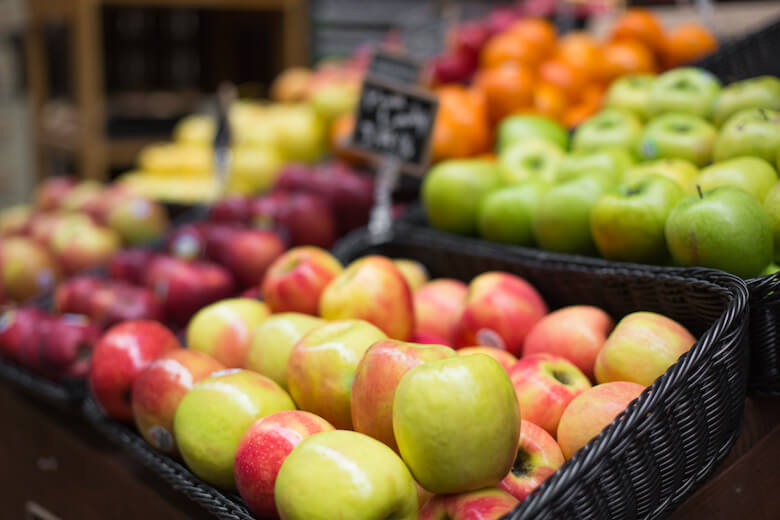
See more on our blog:
- 11 Preschool field trip ideas and lesson topics to go with them
- 5 Simple ways to teach preschoolers phonics basics
- What is the best way to teach word recognition to early childhood readers?
- 5 Easy ways to teach the alphabet to preschoolers
- How to teach toddlers and preschoolers to count, and learn their numbers
7) Go apple picking with your preschool classroom
If you live near an orchard, contact the owners and ask if you can bring your classroom or daycare group over for an apple picking day. Even if you don’t live near an orchard, see if there are apple harvest festivals happening in your area. These can be great opportunities to teach children where our food comes from, and how it’s connected to other parts of our land and culture.
Better yet: if you can watch an apple grafting session, or see a grafted apple tree producing two kinds of apples, that can really ‘wow’ the classroom!
8) Practice fine-motor skills with apple cutting (safely, of course)
For this activity, use DULL knives that are made for children (we’re talking, plastic, or so dull they can’t cut through butter). For the really little ones, you can pre-cut apple pieces for them to practice on. Either way, this is an excellent activity to practice fine motor skills. It can also develop childrens’ hand muscles as they learn to press hard, keep the apple straight, and cut through it.
There are no ‘chef’s rules’ as to the type of cut we’re looking for! Just make pieces!
9) Host an apple-tasting party during preschool circle time
Whether you use the apples from a grocery store or farm field trip, or have each child bring one from home, get the children to taste apple slices of different varieties. Then, ask them to decide which one they like best! Also, ask them to describe and chart the flavours, so they know why they like the ones they picked, and what their adjectives are.
You can also do this activity by smelling and tasting apple juice or non-alcoholic apple cider.
10) Make applesauce in the preschool kitchen!
Here’s a neat chemistry hypothesis with real-life applications: what happens when you heat up apples? What do the children think will happen? Will apples stay the same? Change colour? Get harder or softer? Will they taste different? What will happen to their skins?
Make applesauce with your preschoolers, and you’ll find out the answers to all of the above questions!
Cook applesauce longer and you might get apple butter, or apple syrup!
A slow cooker would make this easier, by the way.
11) Make an apple volcano at daycare
With before-and-after school care kids, or during buddy-time with the older and younger kids together, you can do another apple chemistry experiment: make volcanoes! This one has no real-world application, it’s just fun and funny!
Apple-canos are just like making a ‘volcano’ in any structure (including bottles), but this time you’ll use a cored apple to do it. Baking soda, vinegar, food colouring and boom! You’ve got surprise fuzz! Here is an article that explains how to put these ingredients together to make the fun happen.
12) Pretend to bake an apple pie with play dough (or real dough)
Use homemade or tan-coloured playdough to play a little ‘house’ by making an apple pie. If you make dough that is not meant to be eaten, be sure the children know not to eat it! It can be tempting if it looks delicious!
This activity can use a ‘real’ apple pie tart recipe, which may be fun. Use your judgement to decide whether the children are old enough to handle the multi-step process of making apple-pie, or just the crust, or just the filling (with you preparing the rest, or buying it).
Practice weaving and decorating dough for the tops! It will make a science experiment, an art lesson, and a fine-motor skills activity, all wrapped in one!
13) Ask preschoolers to stack apples to see how high they go
Preschoolers can learn a lot about architecture and physics when they try to stack things. Wood toy blocks make this easy, but what about wobbly apples? If you stand one on the table, it may stay still. But how many can you stack on top of each other? What if you turn them on their side? What if you twist them?
Play a game with the preschoolers to see how many apples they can stack on top of each other. Talk about what worked, what didn’t and whether or not it will work with a different set of apples.
14) Learn about oxidation, rotting and fermenting with apple science experiments
Apples make the perfect classroom experiment to learn about oxidation, because of how quickly they turn brown, and how easily you can prevent the browning with acidity or liquid. Literally, you can cut an apple open, put it on a plate, and your classroom can watch it turn brown, or come back in an hour to see that it has changed.
Use this lesson to explain food safety to children, in addition to the science of oxidation itself (if they can grasp that much, depending on their age).
You can also put apples in lemon juice, vinegar, plain water, sugar water, etc. and watch the results over time. Check your experiments day after day to see what happens, and record the progress. Ask the children every day what they observe, and what they remember from the day before.
Fermenting in sugar water and watching the bubbles form as the liquid turns to vinegar is probably the most long-lasting and action-packed science experiment with apples that you can do. It’s almost like watching sourdough rise! The children can smell the ferment at different stages. And, if they’re up for it, even taste it! Just make sure they don’t drink it in the alcohol stage!
Here’s an article on how to make apple scrap vinegar (almost the same as apple cider vinegar).
As you learn about oxidation and rotting apples, you can add two more interesting experiments, if you have the capacity: dehydrating apple slices and storing apples as-is.
Dehydrating will require a dehydrator. The good news is that the children can watch the slices go in the dehydrator, and then eat their science experiment the next day.
Storing apples will be a very long-term experiment. The neat thing about them is that they last a long time – like months, or even a year (depending on their variety). But wait a minute – we just saw apples go brown once we cut them open! How do they stay fresh for so long? Oh the wonders of apple skins!
See more on our blog:
15) Learn about the animals that eat apples
Did you know it’s not just us humans that love apples so much? Animals love them too! On a farm, apples can feed the chickens, pigs and horses. If you can make a field trip to a petting zoo or farm, see if the farmers will allow the children to feed the apples to animals.
This may be a good time to learn about all sorts of animal topics.
Oh, and by the way, if you followed our tip on starting a garden with preschoolers, you can show them how worms eat apples too! Throw them in your compost bin, and see what happens! Explain how the nutrients get recycled back into nature.
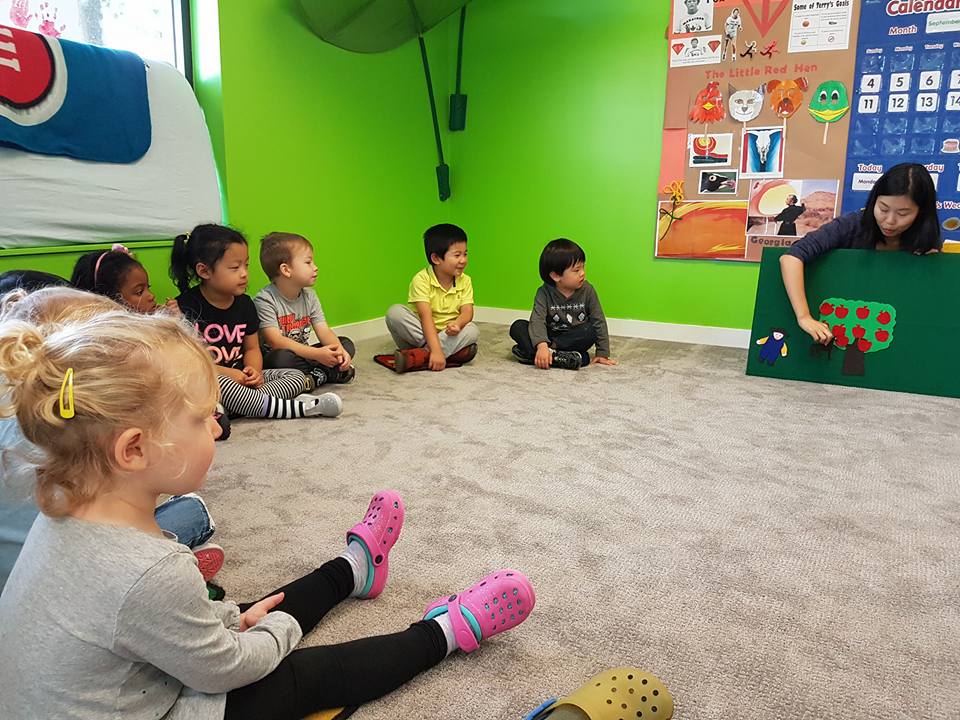
See more on our blog:
16) Make apple-themed sensory bins with fall food materials
Whether you use real or fake apples, you mix them with cinnamon and oatmeal in a bucket to create a fall-themed sensory bin. The kids can scoop, squish and smell the wonders of fall harvests.
See more on our blog:
17) Set up an apple juice stand to learn about currency exchange and hard work
This is a new take on lemonade stands. Have the children set up a stand to ‘sell’ apple juice. You don’t have to do this for real; it can be part of their dramatic play corner. Use play money and have ‘shifts’ while the kids go to work (for like, two minutes at a time, lol). They can take turns being the customer and seller.

See more on our blog:
Preschool apple lessons and activities never stop teaching!
The things you can do with apples in your preschool classroom could go on forever! You can teach letters, do dances, go on more field trips, make more recipes, create more crafts and do all sorts of activities with apple themed lessons.
We hope the ideas above have got your creative juices rolling!
See more on our blog:
